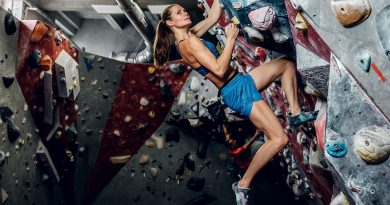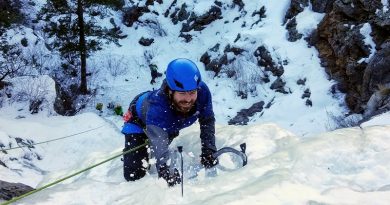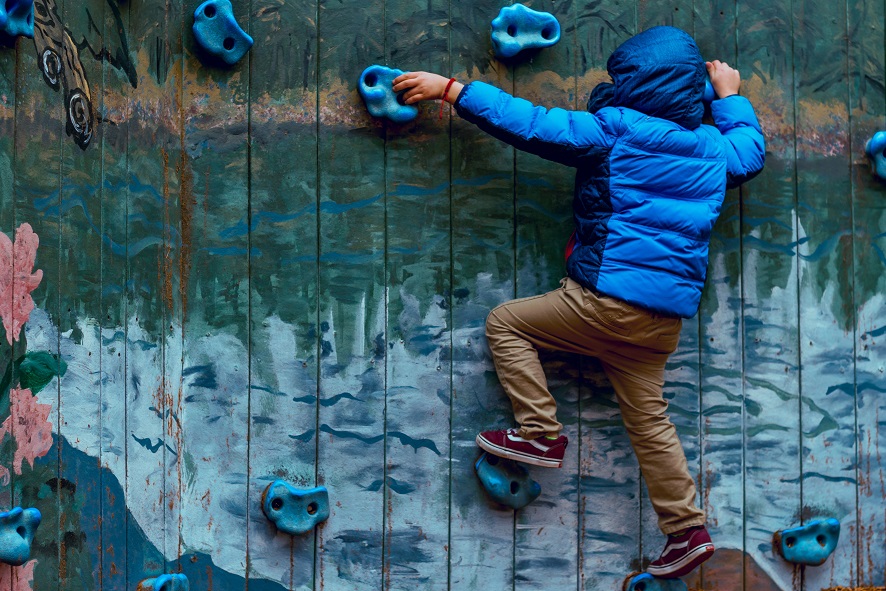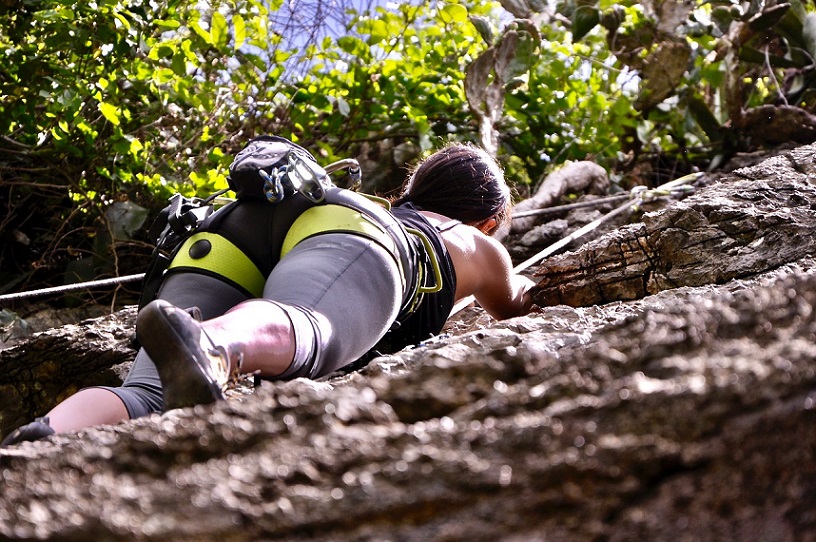When it comes to rock climbing safety, few items are as important as your harness.
Choosing the right harness can affect everything from your climbing ability to your comfort, so it’s important you choose the most appropriate one.
With several different types of rock climbing harnesses on the market, it can be confusing—if not overwhelming—finding one that is safe and appropriate for your climb.
If you’re feeling stuck, don’t worry.
I’ve got you covered.
Below, we’ll walk through some of the most important considerations you should make as you select your next rock climbing harness. As you’ll see, the type of harness you get will ultimately depend on several factors, the most important of which being the type of climbing you’re doing and the comfort you’re looking for.
Ready to learn everything you’ll ever need to know about how to choose a rock climbing harness?
Let’s dive in!
What Should You Look for in a Climbing Harness?
Ultimately, when you select your harness, you’re going to do it by the type of climbing you intend to do. That’s because different harnesses will be designed for specific types of climbs.
Those looking to go alpine climbing, for instance, are going to need a much different harness than those going big wall climbing.
There are six general qualities that you should look for in all types of harnesses: durability, strength, comfort, weight, type of climbing, and load distribution.
We’ll take an in-depth look at each of these to help you determine which harnesses is right for you before I reveal my top five pick.
First, however, let’s go over the different parts of the rock climbing harness. Without understanding the correct terminology, it will be difficult to decide which harness is right for you.
Understanding the Rock Climbing Harness
If you’re new to rock climbing harnesses, make sure you refer to the following information as you continue through this post. I’ll define some of the most important parts of a rock climbing harness. Because we’ll be seeing this terminology throughout our analysis, make sure that you have a solid understanding of what it means.
- Waistbelt (Swami Belt)
It’s this portion of the harness that you (usually) wear around your waist. Some may prefer to wear it around their hips, provided they are small enough. The waistbelt comes with adjustable buckles so that you can get a more comfortable wear. Some may come with additional straps to help with load distribution.
- Belay Loop
The load-tested part of the harness, the belay loop serves as the connector between your harness and the belaying device. The strongest part of the harness, the belay loop should be the only section you attach anything hard to.
- Gear Loop
Unlike belay loops, gear loops are not load tested and are not meant to be load-bearing. Great for carrying your small equipment, gear loops vary in number depending on the type of harness you choose.
- Haul Loop
Another non-load-bearing loops, the haul loop is generally attached to a second rope.
- Buckles
Buckles allow climbers to adjust the waistbelt for added comfort, as well as double lock for extra safety. There was a time when this double locking feature had to be done manually, but most harnesses now will do it automatically—though it’s still a good idea to make sure for yourself.
- Tie-In Points
Tie-in points are located near the belay loop. While they aren’t load tested, they are strong—but don’t use them as if they were your belay loop. Make sure that any rope that is tied through one tie-in point is also looped through the other, as uneven tying can lead to poor weight distribution.
The Six Qualities of a Good Rock Climbing Harness
With this information in mind, it’s time to take a closer look at the six qualities that will help you choose the right rock climbing harness for you!
1. Durability
Durability refers to just how long your harness can hold up. The good news is that most harnesses are generally pretty durable.
This means that a quality harness should last you a few years—but it must be noted that this will inherently depend on how much rock climbing you do and how appropriately you wear and carry your harness.
Making sure that you distribute your weight evenly across the harness when climbing can help ensure that it will last longer.
When wear does finally begin to show on a harness, it’s usually around the tie in points on the waist band. It’s good practice to routinely check for threading in this area, even if you don’t think there could be an issue.
Routinely checking your harness for wear in this manner can prevent major safety incidents while climbing.
2. Strength
The strength of your harness is an important determining factor.
While, generally speaking, all harnesses are designed to be pretty strong, it’s important to note that not all parts of the harness are as strong as others.
Because only the belay loop is load-tested, it’s the only part you should feel comfortable attaching any load-bearing weight to.
Mistakenly attaching load-bearing weight to other parts of the harness—the gear loops for example—can do more than just tear your harness:
It can pose life-threatening risks in the event of a fall.
For this reason, it’s imperative that you understand which parts of the harness can bear weight—and which can’t.
Investing in a harness made of good, durable material can add extra peace of mind. The real trick, however, becomes selecting a harness that is both durable, strong, and comfortable.
3. Comfort
When speaking of rock climbing harness comfort, there are many aspects to be aware of.
Namely, you’re going to want to wear a harness that fits comfortably no matter if you’re standing, resting, or belaying.
The comfort of your harness is integral to enjoying your rock climbing experience. Making sure to wear a comfortable harness can help you climb longer and more safely.
The key to getting a comfortable harness is to get one that fits, but as any rock climber knows, it’s not quite so simple.
Depending on the type of climbing you’re doing or the amount of clothes you need to wear, the type of rock climbing harness you use may need to be changed.
Additionally, unexpected weight gain during the winter months can influence how comfortable your harness is when you start climbing again in the spring.
With this in mind, let’s take a look at three of the most important considerations to make when you’re judging a harness for comfort.
a. Waist
You’re going to want to make sure that you can fit the harness comfortably around your waist—generally around your belly button.
Those who wish to wear their harness around their hips may do so as well, if it fits, but it’s more standard to wear it around the belly button.
No matter how you wear it, it’s important that you have a pretty snug fit. You don’t want to wear it so tightly that it’s difficult to move, but it also shouldn’t be so loose that it will ride up when you’re climbing. This can cause uncomfortable chafing and make your climb unnecessarily difficult.
Instead, make sure that you have your harness as tight as it can be without interfering with your mobility—either in the air or on the ground. By following this rule, you can be sure that you’ll have a safe fit that allows for the maximum mobility.
b. Rise
If you’re new to rock climbing, this may be new terminology for you.
“Rise” refers to the distance between your waist belt and your leg loops, and there are basically two things you need to watch out for here:
- The Distance Is Too Short—In this case, your hanging will be affected, as you’ll typically be thrown back.
- The Distance Is Too Long—Here, your hanging will be fine, but if you do happen to fall, you’ll bear more of the blow—even if you’re caught.
c. Legs
While adjusting the fit of the leg portion of the harness isn’t as mainstream as it used to be, it’s still something that you should do.
On newer harnesses, you’re unlikely to find adjustable loops as you would on the waist portion, but you can usually still adjust the fit with a piece of attached elastic.
Here, you’re going to want to make sure that the fit you’ve got is pretty tight. You may find that newer harnesses come pre-fixed with a certain leg fit based on the waist size, but if this doesn’t work for you, remember that it’s still adjustable.
4. Weight
Here’s where we get into a factor that really depends on the type of climbing that you’re doing.
For some rock climbers, the weight of their harness simply doesn’t matter that much. These are those who are typically doing short climbs who are concerned more with the comfort of their harness than its weight.
Because here’s the deal: there’s actually not much difference in the weight of most of the major harnesses—at least if you’re not doing long climbs.
It’s only when you start doing alpine climbing or other more-skilled climbs that weight might become a factor. The longer you climb, the more the weight will affect you—especially if you’re going to need to utilize different or more-advanced techniques.
For this reason, it’s important that we take a look at some of the most popular forms of rock climbing and the harnesses best suited for them.
5. Type of Climbing
It’s important to keep the type of climbing that you’ll do in mind when selecting your climbing harness. Consider these three types:
a. Sport and Gym Harnesses
Those looking for a harness for sport and gym climbing are going to need something lightweight. There are several features about these harnesses that help reduce weight for easier climbing—but note how this reduces the functionality of these harnesses for other forms of climbing.
For instance, the belay loop is typically thinner, making them not quite as strong as other harnesses. Gear and leg loops are kept to a minimum, meaning that you have less room to attach your gear and less flexibility in adjusting your leg fit.
b. Alpine Harnesses
An extremely lightweight harness, alpine climbing harnesses are made to be super adjustable.
These harnesses are designed under the impression that climbers will be wearing multiple layers of clothes. For this reason, full adjustability is added to ensure maximum comfort.
And because of the nature of the climb, the harness itself is as lightweight as they come and made from a thin material.
These features make these harnesses perfectly adapted to alpine climbing, but as any rock climber will tell you, they’re not something you want to wear for your regular climbs.
c. Traditional Harnesses
Designed for more traditional climbing, these harnesses go all-in on the comfort level. With thick padding, full adjustability, and a plethora of loops, traditional harnesses deliver on a wide variety of different aspects.
As you may have guessed, however, this makes them heavier than both sport and alpine harnesses—and unsuitable for both.
For those who are looking to do regular rock climbing, however, these harnesses provide a great alternative.
Because there are several gear loops, you can carry a wide variety of gear while also enjoying greater all-around padding.
And as I’ve said, though there is a difference in weight, it will be negligible unless you’re doing longer or more difficult climbs. Generally speaking, the added convenience and functionality of traditional harnesses far outweigh any burdens imposed by the extra weight.
6. Load Distribution
Finally, it’s important to consider the load distribution for your harness.
This refers to how weight is distributed through the harness, and it can have an important impact on both your comfort and your safety.
Harnesses that have equally-distributed weight are more comfortable to wear and have higher durability ratings.
You can find some harnesses that include extra bands across the waist belt to evenly distribute all attached weight.
My Top Five Picks for Beginner Climbing Harnesses
Knowing all this, which climbing harness is best for you? Below, I’ve chosen five of the best climbing harnesses for you to choose from. I’ve done the research and considered these harnesses from all angles, so you don’t have to.
So which harnesses are best for your purposes? Let’s take a look and see!
Overall Best Harness for Beginners: Mammut Ophir 3 Slide
Here we go: Mammut’s Ophir 3 Slide is our top pick for beginner climbing harnesses.
Sure, it’s not the fanciest harness on the market, nor is it the top rated, but it offers a well-rounded experience unlike many other harnesses for its price. For that reason, it’s perfect for those who are just taking up rock climbing and aren’t yet ready to make a serious investment in the sport.
Though it’s really low priced, this harness will allow you to do everything you need to do as a beginner. Whether you wish to stay in the comfort of a gym and perfect your climbing technique or are looking to branch out, Mammut’s Ophir 3 Slide has you covered.
Though it’s certainly possible (and actually inevitable) that you will switch your harness as your skills increase and you become ready to try more things, this harness serves as the perfect starter item for anyone looking to test the rock climbing waters.
Users will be happy to know that, despite its low price, the Ophir 3 Slide fights effectively against sweat marks and provides ample breathing room. This comfort, along with its design, makes it a good well-rounded option for any beginner.
Best Harness for Trad: Black Diamond Chaos
What makes Black Diamond’s Chaos the best trad harness on the market?
I’m glad you asked.
Incorporating the company’s Kinetic Core Construction, this harness does an amazing job of balancing out pressure as you climb or hang. Furthermore, its foam design is lightweight and conducive to quick and efficient climbing.
While Chaos is the perfect choice for more advanced trad climbers, I also recommend it to beginners who are looking to take up the discipline. Simply put, it’s hard to beat Chaos’s 12kN haul loop. It’s also hard to match its durability. Chaos is perfect for beginners because it’s a trad-centered harness that provides maximum safety, durability, and comfort.
If you want this option, make sure you get it fast. Black Diamond has recently announced that Chaos will be replaced with the Solution Guide in Spring 2019. This new item will accordingly be a bit cheaper than the Chaos, but it comes with a price—it’s heavier.
Best Budget Harness: Edelrid Jay II
Say what you want about the price, but the Edelrid Jay II is a safe, durable option that every rock climbing beginner should know about.
With a price way under $100, this harness may seem suspect at first. After all, it’s only a third of the cost of its competition. Don’t worry, though—the Jay II is one of the toughest and longest-lasting harnesses on this list.
Of course, it does have its limitations. Though it comes in seven total sizes (three for men and two for women) and is adjustable for ease of use, this harness is not lightweight at all. Compared with the more compact options on this list, the Jay II may feel bulky to users.
Still, it’s a good option for anyone looking to start their rock climbing journey. Not only is it the best cheap option on the market, but it gets the job done. While I wouldn’t recommend this piece to more advanced climbers, I think it’s perfect for anyone looking to start rock climbing on a budget.
Best Harness for Weight: Petzl Sitta
The Petzl Sitta isn’t just the lightest harness on this list—it’s quite possibly the lightest harness ever.
As such, it only makes sense that this trendy harness is our pick for best harness based on weight.
With an innovative design that shirks thick padding in favor of Spectra strands, Sitta is the harness of choice for those who are looking to climb fast. This is made further true by the harness’s unique wireframe technology that helps distribute loads and keep pressure off your body. If you are a beginner and want something that will give you the optimum freedom of movement, there’s no reason to choose any other harness.
What’s more, this popular item currently clocks in at an acceptable price, making it an affordable option for anyone looking to purchase or upgrade their rock climbing gear. Though it’s certainly more expensive than some other items on this list, its worth the extra dollars for anyone who is looking to take their rock climbing experience to a new level.
Users will also enjoy its durability and its Caritool tool holder slots. Designed with maximum comfort and efficiency in mind, Sitta gives you everything you need for a comfortable climb. In fact, some users have even remarked that the harness is so lightweight, it’s like it’s not even there.
Best for the Gym: Petzl Aquila
If you’re looking to do a little climbing in the gym, there’s no better harness than Petzl’s Aquila.
Consumers love the lightweight comfort of this item and the way it seems to mold to their bodies as they climb. This is made possible by an expertly-designed waist belt that doesn’t press into your body or put pressure on you as you ascend, descend, or fall.
Because the rear loops on this piece are smaller, Aquilla may not be as functional as some other items on this list. That’s why I’ve chosen it as the perfect gym harness.
This is a great set for beginners who are just looking to get into rock climbing. What’s more, newcomers will love the mesh padding that allows their bodies to breathe. This sweat-fighting mechanism will have your gym climb more enjoyable than ever.
It’s also not a bad budget option. Priced somewhere in the range of $100 dollars (see the exact price here), this harness is a great option for any climber—beginner or otherwise—looking for quality climbing at low prices.








